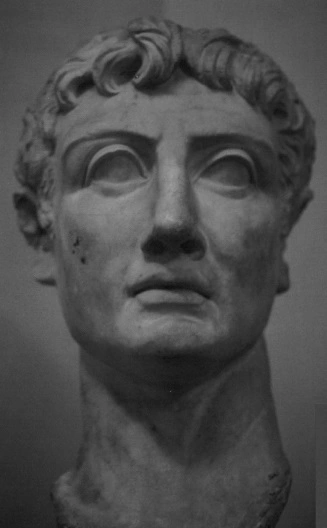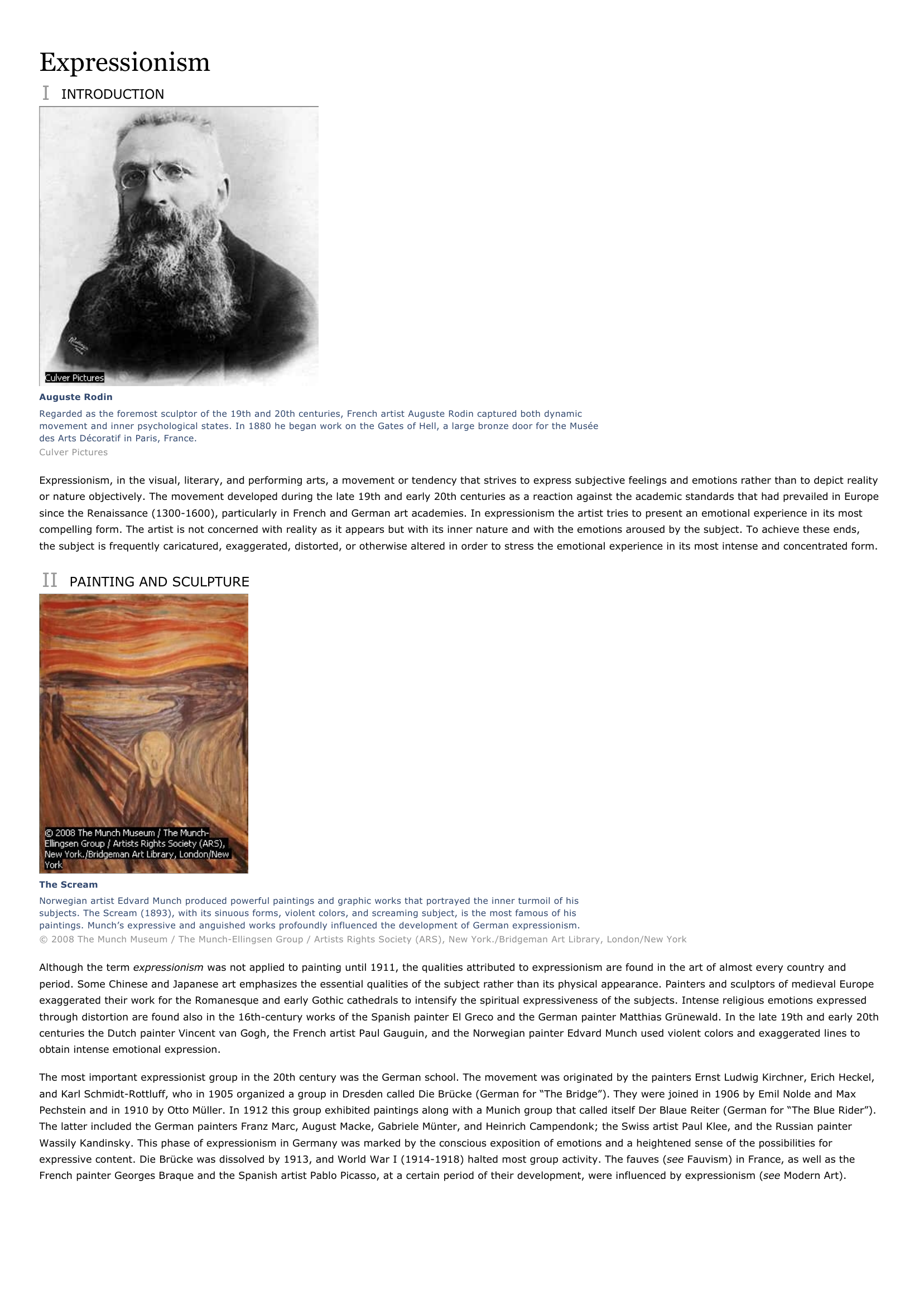Rodin Auguste
Publié le 05/04/2019

Extrait du document

Rodin Auguste Sculpteur français
* 12.11.1840, Paris + 17.11.1917, Meudon Il s'engage dans la sculpture à l'époque où les peintres français découvrent l'impressionnisme. Son travail sur les surfaces, accusant les reliefs et les creux, produit un jeu complexe de lumières et d'ombres qui confère une intensité particulière à ses sculptures. Ce nouveau moyen d'expression s'accompagne d'un abandon du mode de représentation traditionnel. Par des poses et des gestes d'une grande expressivité, il rend visibles les passions qui habitent ses sujets. Cette technique, associée à l'exploration de nouvelles voies stylistiques allant jusqu'à évoquer l'expressionnisme, fait de Rodin un grand novateur de la sculpture européenne. Ses premiers travaux sont en marge des courants dominants, et la première oeuvre qu'il envoie au Salon de 1864 est refusée. Ses sculptures se heurtent longtemps à l'incompréhension du public : le groupe dramatique \"Les Bourgeois de Calais\" (1884-1886) soulève un concert de protestations. Parmi les autres oeuvres importantes de Rodin figurent \"La Porte de l'Enfer\", à laquelle Rodin travaille de 1880 à 1885 et qui reste inachevée, \"Le Penseur\" (1900), \"Eve après le péché\". Pour \"Le Baiser\" (1886), le sculpteur prend comme modèle son élève, assistante et compagne, Camille Claudel. Ce n'est qu'après la participation de Rodin à l'Exposition universelle de Paris en 1900, que ses créations commencent à rencontrer un accueil plus favorable.

«
Expressionism
I INTRODUCTION
Auguste RodinRegarded as the foremost sculptor of the 19th and 20th centuries, French artist Auguste Rodin captured both dynamicmovement and inner psychological states.
In 1880 he began work on the Gates of Hell, a large bronze door for the Muséedes Arts Décoratif in Paris, France.Culver Pictures
Expressionism , in the visual, literary, and performing arts, a movement or tendency that strives to express subjective feelings and emotions rather than to depict reality or nature objectively.
The movement developed during the late 19th and early 20th centuries as a reaction against the academic standards that had prevailed in Europesince the Renaissance (1300-1600), particularly in French and German art academies.
In expressionism the artist tries to present an emotional experience in its mostcompelling form.
The artist is not concerned with reality as it appears but with its inner nature and with the emotions aroused by the subject.
To achieve these ends,the subject is frequently caricatured, exaggerated, distorted, or otherwise altered in order to stress the emotional experience in its most intense and concentrated form.
II PAINTING AND SCULPTURE
The ScreamNorwegian artist Edvard Munch produced powerful paintings and graphic works that portrayed the inner turmoil of hissubjects.
The Scream (1893), with its sinuous forms, violent colors, and screaming subject, is the most famous of hispaintings.
Munch’s expressive and anguished works profoundly influenced the development of German expressionism.© 2008 The Munch Museum / The Munch-Ellingsen Group / Artists Rights Society (ARS), New York./Bridgeman Art Library, London/New York
Although the term expressionism was not applied to painting until 1911, the qualities attributed to expressionism are found in the art of almost every country and period.
Some Chinese and Japanese art emphasizes the essential qualities of the subject rather than its physical appearance.
Painters and sculptors of medieval Europeexaggerated their work for the Romanesque and early Gothic cathedrals to intensify the spiritual expressiveness of the subjects.
Intense religious emotions expressedthrough distortion are found also in the 16th-century works of the Spanish painter El Greco and the German painter Matthias Grünewald.
In the late 19th and early 20thcenturies the Dutch painter Vincent van Gogh, the French artist Paul Gauguin, and the Norwegian painter Edvard Munch used violent colors and exaggerated lines toobtain intense emotional expression.
The most important expressionist group in the 20th century was the German school.
The movement was originated by the painters Ernst Ludwig Kirchner, Erich Heckel,and Karl Schmidt-Rottluff, who in 1905 organized a group in Dresden called Die Brücke (German for “The Bridge”).
They were joined in 1906 by Emil Nolde and MaxPechstein and in 1910 by Otto Müller.
In 1912 this group exhibited paintings along with a Munich group that called itself Der Blaue Reiter (German for “The Blue Rider”).The latter included the German painters Franz Marc, August Macke, Gabriele Münter, and Heinrich Campendonk; the Swiss artist Paul Klee, and the Russian painterWassily Kandinsky.
This phase of expressionism in Germany was marked by the conscious exposition of emotions and a heightened sense of the possibilities forexpressive content.
Die Brücke was dissolved by 1913, and World War I (1914-1918) halted most group activity.
The fauves ( see Fauvism) in France, as well as the French painter Georges Braque and the Spanish artist Pablo Picasso, at a certain period of their development, were influenced by expressionism ( see Modern Art)..
»
↓↓↓ APERÇU DU DOCUMENT ↓↓↓
Liens utiles
- Rodin Auguste Sculpteur français
- AUGUSTE RODIN
- Rodin Auguste Sculpteur français
- Le Penseur 1880 Auguste Rodin (1840-1917)
- Auguste Rodin (Exposé – Art & Littérature – Collège/Lycée)

































